Introduction
Cloud backup and recovery have become essential components of data protection and security in today's digital landscape. The ability to recover from data loss is paramount as data plays a crucial role in commerce and innovation. Unexpected events such as technical malfunctions, natural disasters, or cyber threats can compromise or erase critical datasets.
This is where cloud backup and recovery come in, mitigating risks and providing businesses with the resilience to rebound swiftly from disruptions.
In this article, we will explore the importance of cloud backup and recovery, different types of cloud backup configurations, key benefits of cloud backup, data backup methods, data encryption and access controls, setting up a cloud backup system, choosing the right cloud vendor, defining recovery time objectives and recovery point objectives, conducting a risk assessment for cloud environments, selecting the appropriate cloud disaster recovery strategy, establishing clear roles and responsibilities in disaster recovery, best practices for cloud backup and recovery, regular testing and maintenance of cloud backups, and the role of managed services in cloud backup and disaster recovery.
By understanding these topics, organizations can make informed decisions about their cloud backup and recovery strategies, ensuring the safeguarding of their data assets and the continuity of their business operations.
Why Cloud Backup and Recovery Are Essential
Cloud storage and restoration are essential foundations within a comprehensive protection and security structure. In an era where data acts as the lifeblood of commerce and innovation, the ability to recover from data loss is paramount. Unforeseen events ranging from technical malfunctions to natural disasters or malicious cyber activities can compromise or erase crucial datasets. The implementation of cloud-based data protection and restoration minimizes these hazards, offering enterprises the ability to recover from interruptions expeditiously.
For instance, higher educational institutions generate vast amounts of information essential for research and student recruitment. Cloud storage solutions enhance accessibility and management, enabling real-time access without the latency associated with traditional storage methods. In a similar vein, Chess.com, which facilitates millions of daily interactions, relies on a hybrid IT infrastructure that incorporates cloud-based elements to sustain its global community. Their commitment to a stable digital experience underscores the importance of robust backup systems.
Furthermore, companies such as Azur Games have acknowledged the requirement for expandable cloud-based answers to manage substantial volumes of information without any disruption. Their transition to cloud-based infrastructure exemplifies the strategic approach to maintaining operational continuity. In terms of news, storage service providers such as Backblaze disclose overseeing more than three exabytes of information, with remarkable dependability figures for their storage hardware, underscoring the increasing dependence on cloud services for information integrity.
The implementation of remote data storage is not just a technical choice; it is an investment in peace of mind. Choosing the correct solution requires evaluating aspects such as reliability, access speed, confidentiality of information, server location, and scalability. The 3-2-1 principle, which advocates for multiple copies of information across various platforms with one off-site storage, remains a relevant strategy in the era of cloud computing. This method guarantees preservation and accessibility, even in the event of infrastructural failures.
To summarize, the incorporation of cloud-based information protection and retrieval solutions into corporate tactics is evidence of their vital part in securing valuable assets. By aligning strategies for safeguarding important information with the requirements of the organization and proactive management of potential risks, companies can guarantee the continued accessibility and protection of their vital data.
Types of Cloud Backup Configurations
Selecting the appropriate cloud backup configuration is a critical decision that hinges on your organization's unique requirements. For companies with rigorous demands for long-term archival storage, it's crucial to utilize a solution that affords high security and storage reliability. Such a solution means information remains accessible, even following a catastrophic loss of local infrastructure, and allows global enterprises to geographically distribute their information for enhanced accessibility and compliance.
A sector where immediate information access is crucial is higher education. The ability to swiftly reach and manage burgeoning data volumes is essential, whether for scientific research or university operations. Hot cloud storage addresses this need by eliminating the access delays associated with alternatives like cold storage or LTO tape. Furthermore, the increasing dependence on cyber insurance highlights the significance of having off-site or immutable alternative copies that are not stored within the company's own premises.
Recent advancements in data protection technologies offer solutions tailored to the needs of businesses looking to have control over their backup systems. Innovations such as Enterprise Control have emerged, allowing IT administrators to manage user authentication and the scope of information restoration, therefore enhancing the security and compliance of the data protection process.
The 3-2-1 data protection principle, supported by influential figures, is evidence of the ongoing requirement for multiple copies on diverse media, with at least one off-site replica. This concept, despite being questioned by the introduction of remote storage, continues to be a fundamental aspect of strong information security plans. Choosing a service for storing and ensuring uninterrupted operations of the business should go beyond just capacity and speed; it should be in line with the specific requirements and goals of the company, guaranteeing the safety of information and continuous functioning. Making a careful selection in a cloud-based data protection service can act as an additional measure, ensuring the safety of your organization's information in case of unexpected calamities and interruptions in the system.
Key Benefits of Cloud Backup
Cloud data protection is not just a modern convenience; it's a strategic tool that can be pivotal in safeguarding a company's operational continuity. Acknowledging the vital importance of information in the current digital landscape, cloud storage emerges as an essential component of the solution for guaranteeing data security. As an organization's data volume expands and the possibility of data loss due to unforeseen disasters or cyber threats like ransomware rises, the proactive measure of implementing off-site storage becomes an indispensable aspect of modern business practices. This approach is not only about shielding information but also about guaranteeing a sense of security and establishing a resilient contingency strategy.
A striking instance of the significance and advantages of remote data storage can be observed in the instance of Chess.com, which supports more than ten million daily chess games and has a worldwide user base of over 150 million. Chess.com's Head of Infrastructure, James Kelty, emphasizes the company's mission to nurture the growth of chess and foster connections worldwide. To provide a smooth digital chess experience worldwide, Chess.com depends on a robust IT infrastructure that includes a combination of public computing and on-site solutions, emphasizing the necessity of scalable and dependable cloud data protection systems.
Beyond the anecdotal evidence, statistics underscore the importance of online backup. With the help of blockchain technology, for example, users of cloud services achieve independent control over their information, thanks to a distributed database structure that removes central points of failure and enhances information security across a network of nodes. Furthermore, comprehensive reports indicate that cloud value extends beyond IT productivity to encompass business innovation and advanced technologies, such as generative AI, which can further amplify the benefits of cloud adoption.
In the realm of information storage and protection, the 3-2-1 backup principle stands as a testament to the enduring need for diversified and off-site data copies. This time-honored strategy recommends maintaining three copies of information on two different media types, with one copy stored off-site, to ensure information integrity against all odds.
To summarize, the implementation of cloud-based information protection is a tactical choice that supports the goals of safeguarding data and guaranteeing continuous availability to vital information. It's an investment that not only safeguards against information loss but also contributes to the stability and success of business operations in an increasingly unpredictable digital environment.
Understanding Data Backup Methods
Selecting an appropriate solution for backing up information in the cloud necessitates understanding the nuances of different methods for safeguarding information. Modern challenges highlight the significance of dependable information storage. For example, previous problems such as bit decay, where file integrity was compromised due to hardware malfunctions or inadequate software design, have been mitigated with advancements in cloud technology. Continuous integrity checks are now standard practice to prevent such corruption.
Today, strategies for safeguarding information must adapt to support a wide range of information formats, ranging from structured legacy information to dynamic JSON formats. This transformation is especially vital as organizations often implement updates, potentially altering data restoration schemas or API connections, which can affect the compatibility of restoring information.
The concepts of information safeguarding have also been improved. The 3-2-1 backup principle, supported by influential individuals in the industry, advocates for maintaining three copies of information across two different storage methods, with one off-site copy. While this approach was previously seen as burdensome because of the physical media involved, cloud storage has transformed this method by providing scalable, dependable, and geographically dispersed solutions for storing and safeguarding information.
Recent incidents, like the unforeseen data loss encountered by some Google Drive users, emphasize the real-world consequences when fail-safe systems falter. These episodes highlight the importance of strong alternative solutions like CloudCasa, which offer flexibility in deployment options and have gained significant market traction.
Data storage is not merely about safeguarding information; it's about the continuity of business operations and peace of mind. As the volume of information expands and threats like ransomware proliferate, the selection of a backup solution becomes a strategic decision. It should be based on criteria such as reliability, access speed, confidentiality, server location, and scalability. For example, Backblaze's management of more than three exabytes of information and its strict drive monitoring demonstrate the dedication required to ensure information reliability.
Recovery Time Objectives (RTO) and Recovery Point Objectives (RPO) are crucial metrics in evaluating data protection solutions. They measure the tolerance for application downtime and information loss, respectively. A sound data protection plan is aligned with a company's RTO and RPO, enabling them to swiftly restore necessary applications' functionality after an outage without substantial operational or financial repercussions. As enterprises navigate the intricacies of safeguarding information, these factors are crucial for achieving a stable and resilient technological ecosystem.
The Importance of Data Encryption and Access Controls
To effectively protect backup information from unauthorized access and preserve privacy, encryption and strict access controls are crucial. Encrypting information transforms sensitive information into an unreadable format for those without the decryption key, much like the single-key encryption and decryption method known for its speed and utility in handling large datasets. However, the secure exchange of these keys is a critical concern.
One practical application of advanced management and security is evident in the case of Retail Bank, which opted for synthetic information to test a third-party solution, avoiding the use of real customer transaction information that poses security risks and contravenes information minimization principles. This strategic choice not only reduced the exposure of personal information but also enabled the safe and effective evaluation of the product designed to identify vulnerable individuals based on income and spending patterns.
Supporting the significance of security, Anthony Cusimano, technical director at Object First, compares the internet without proper security measures to a house with unlocked doors, emphasizing the necessity for 'locks' to ensure safety and privacy. This analogy underscores the growing awareness and proactive stance toward securing our digital presence.
Furthermore, the crucial role of information security in an organization's operations cannot be overstated. With the global cybersecurity workforce estimated at 4.7 million professionals, and a median annual pay for information security analysts at $102,600 in 2021, it's evident that the industry prioritizes the protection of information. Disturbingly, only 4% of organizations feel fully confident in their security against cyberattacks, emphasizing the urgency for more robust protection strategies.
Companies like EAGLYS are leading the way in utilizing Homomorphic Encryption within their AI platforms, providing solutions across various industries. EAGLYS shows how collaboration can generate new value while ensuring protection and privacy.
Ultimately, the integration of encryption and access controls is not just a technical necessity but a foundational element in maintaining trust with stakeholders, protecting the organization's reputation, and ensuring the continuity of operations.
Setting Up a Cloud Backup System
The procedure of incorporating cloud safeguarding into your protection plan is a crucial step to secure vital information from potential risks such as hardware malfunctions, environmental calamities, and cyber assaults. To set up a reliable cloud backup system, it is crucial to take a sequence of thoughtful measures, guaranteeing that your information stays safe and reachable when you require it most.
Firstly, it's essential to express your objectives for information storage and evaluate the specific needs linked to your business operations. This includes assessing the volume of information you plan to back up and the frequency of updates needed. With personal information volumes skyrocketing - as demonstrated by individuals with massive amounts of information - it's crucial to embrace a safeguarding system that can effectively manage growing quantities of data. The recent loss of 340 GB of personal information by a user highlights the significance of a dependable system for safeguarding against such incidents.
When configuring your cloud storage, take into consideration crucial factors such as the reliability of the service, the speed at which you can access your information, and the confidentiality protocols in place. The geographical location of the servers is also a vital consideration, especially for global organizations requiring distributed access. Moreover, the ability to scale should be prioritized in your decision-making, enabling your alternative solution to expand alongside your information requirements.
The concept of the 3-2-1 backup principle is a testament to the importance of diversifying your backup strategy. This approach supports the practice of keeping three duplicates of your information across two different types of media, with one duplicate stored off-site. It's a strategy that has been recommended by industry experts due to its effectiveness in mitigating information loss risks.
Advancements in technology, like blockchain, are transforming security of stored information by providing decentralized storage solutions. This method improves security by dispersing information throughout a network of nodes, each functioning as an independent point of control, thereby removing centralized points of failure susceptible to attacks. Based on observations from Gartner, these revolutionary technologies are shaping the future of security in the cloud and information administration.
In summary, establishing a remote storage system is a proactive step to safeguard against information loss and guarantee uninterrupted availability of vital data. Through meticulous preparation and choosing an alternative option that matches your particular needs, you can safeguard your data with assurance and uphold the credibility of your operational activities.
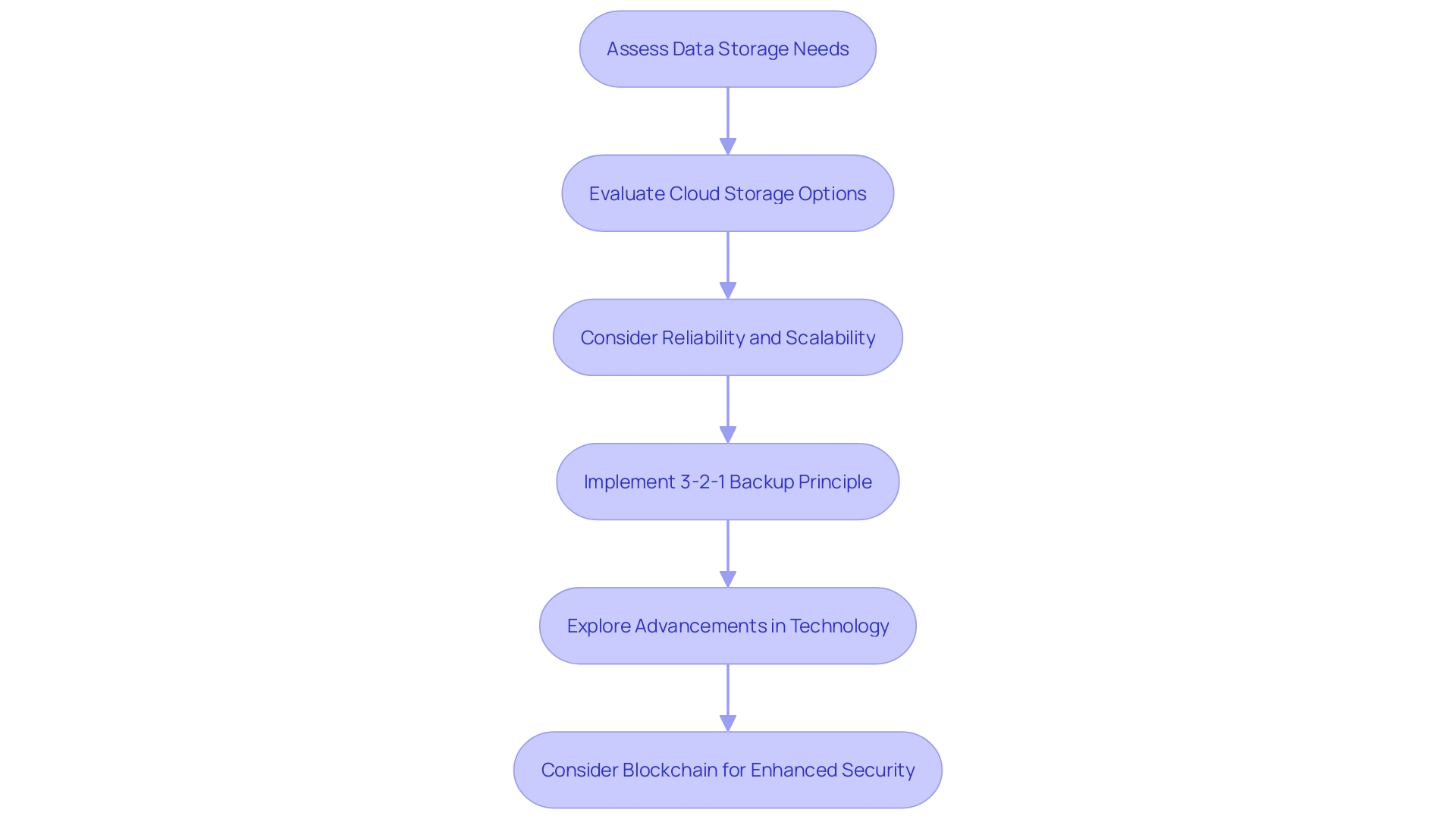
Choosing the Right Cloud Vendor
When evaluating vendors for backup solutions, it's crucial to analyze different factors to guarantee your selection aligns with your company's continuity and security requirements. For example, NVIDIA Inception's program is illustrative of a vendor providing startups with not only cutting-edge technology but also valuable networking with investors and comprehensive technical resources. This level of support is crucial for businesses at any stage of growth.
Likewise, IFCO's experience with Rackspace Technology highlights the importance of choosing a provider with a strong track record and a customer-centric approach. Their decision was influenced by Rackspace's ability to offer insightful alternative strategies and their emphasis on customer needs.
It's also essential to consider the cloud-managed services provider's support level. A successful transition to cloud-managed services requires a partner who can assist with the complexities of cloud migration, from initial planning to successful implementation.
Moreover, with 62% of organizations utilizing multi-cloud environments and 18% transitioning, according to an OVHcloud report, the ability to work effectively in such setups is increasingly crucial. The benefits of multi-cloud, such as flexibility, improved agility, cost-effectiveness, and reduced organizational risk, must be considered when selecting a vendor.
When considering storage in the cloud for emergencies or cyber-attacks, evaluating the solution's reliability, speed of accessing information, confidentiality of information, geographical location of servers, and scalability is crucial. As the size of information increases, the significance of having a trustworthy alternative online storage strategy becomes more apparent. Gartner Peer Insights also stresses the importance of individual experiences and the necessity to find a vendor that fits your specific needs.
In summary, selecting the appropriate cloud vendor for data protection services involves considering the vendor's expertise, the support and resources they offer, their experience with cloud migrations, and their ability to provide a reliable, scalable, and secure solution that meets your organization's needs.
Defining Recovery Time Objectives (RTOs) and Recovery Point Objectives (RPOs)
When creating strategies for protecting information and ensuring quick restoration from disruptive incidents, it's crucial to understand the importance of Recovery Time Objectives (RTOs) and Recovery Point Objectives (RPOs). These measurements are the key elements of a strong recovery plan, defining the tolerable length of operational downtime and the level of data loss acceptable to an organization in the aftermath of a catastrophe.
RTOs refer to the maximum acceptable length of time that applications and systems can be offline after a failure before the organization is adversely impacted. In contrast, RPOs define the maximum age of files that must be recovered from backup storage to resume normal operations post-disaster. The finer the balance between these two metrics, the more resilient an organization's disaster recovery strategy is.
The gravity of these considerations became starkly evident during the flooding of a major cloud provider's datacenter in Paris in the latter half of 2023, which underscored the need for businesses to have concrete, tested recovery plans. A company with an RPO set at 8 hours, for instance, ensures that information is backed up every 8 hours, limiting potential information loss to a workday's worth of new information.
Recent industry developments emphasize the importance of scalability in protection equipment, as energy efficiency and minimizing waste heat become increasingly critical. Meanwhile, advancements in AI and semiconductor technologies are transforming data center operations, further emphasizing the importance of RTOs and RPOs in continuity strategies.
In the end, the design of recovery systems should be based on clear, agreed-upon metrics for RTOs and RPOs. Regular testing to confirm these objectives can be met is crucial, as untested assumptions can lead to recovery failures. As observed by the DevOps Research and Assessment (DORA) team, key performance indicators like Mean Time to Recovery can significantly enhance software delivery efficiency, further highlighting the imperative of well-defined and rigorously tested recovery objectives.
Conducting a Risk Assessment for Cloud Environments
A strong backup solution in the virtual storage is crucial for protecting data against possible dangers and guaranteeing continuity of operations. To effectively protect this valuable asset, it's imperative to commence with a thorough risk assessment. This begins with delineating the AI use case, pinpointing all pertinent stakeholders, and understanding the specific business problem the AI system addresses. It involves mapping out the workflow, inputs, and outputs, and recognizing the stakeholders who might be affected by the AI system, which can be complex but is critical for a comprehensive risk analysis.
The next step involves estimating risk using both inherent and residual risk measures, as outlined by the NIST Risk Management Framework. Inherent risk refers to the level of risk present without any controls, whereas residual risk is what remains after implementing mitigations. This human-centric evaluation necessitates a company-wide initiative, incorporating the perspectives of various teams such as product, engineering, science, sales, and security, as well as considering how societal norms impact the perception of potential risks.
An illustrative example of the importance of a meticulous risk assessment was when AWS alerted a client about an unauthorized request to increase email sending limits, although the client wasn't using the SES feature. This incident emphasizes the importance of vigilance and a proactive stance in security in the sky.
With 78% of organizations embracing hybrid and multi-cloud strategies, the complexity of managing cloud environments is constantly increasing. In spite of the attraction of online services, it is crucial to acknowledge the security hurdles that come with them and the significance of encryption and confidentiality practices to safeguard sensitive information.
To summarize, the selection of alternative online storage should be guided by a clearly defined group of factors, including dependability, rapidity of information retrieval, confidentiality of information, location of servers, and expandability. By doing so, organizations can ensure they have a reliable 'plan B,' capable of withstanding unforeseen events such as natural disasters or technical failures, thus maintaining the safety and integrity of their operations.
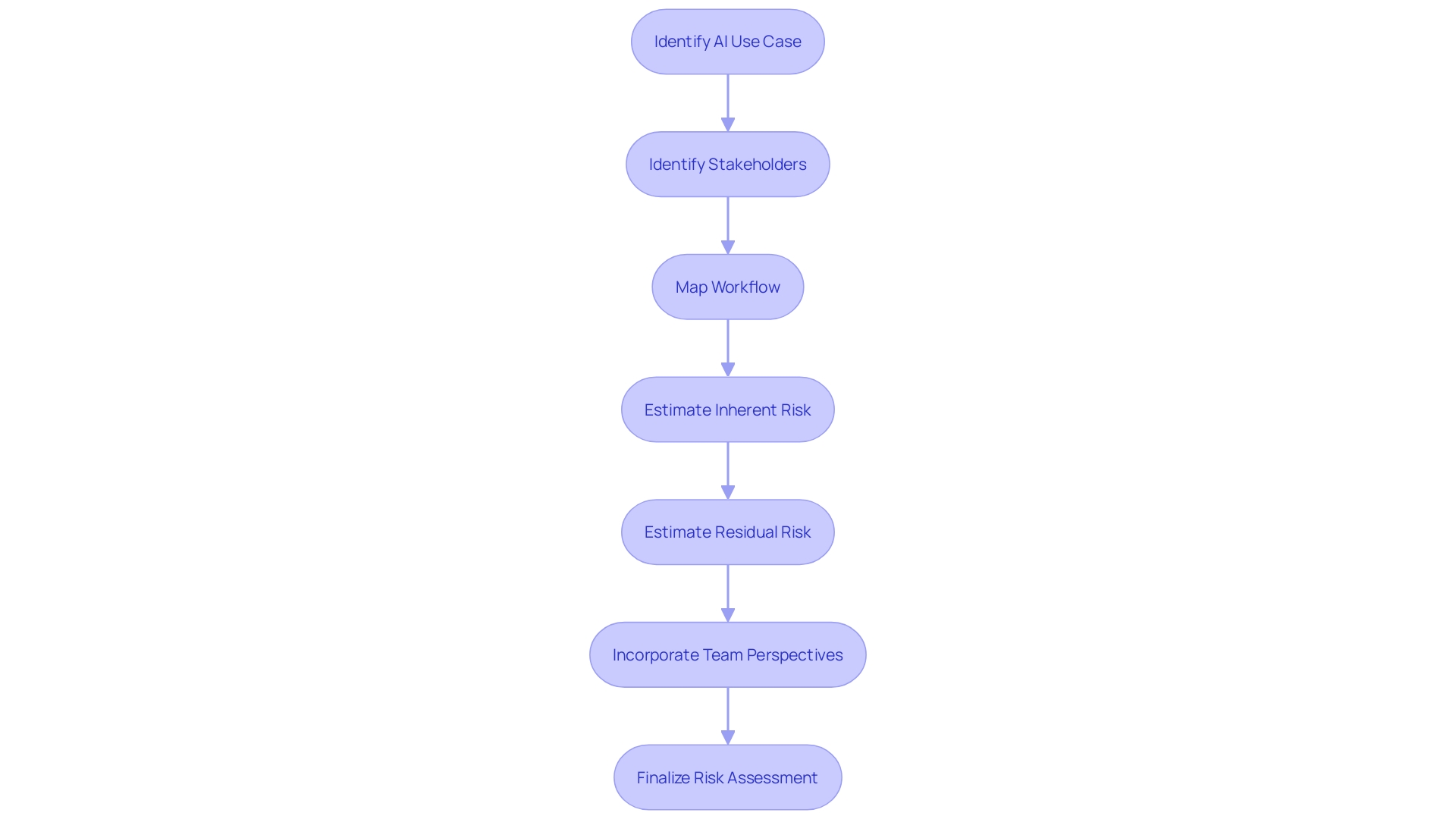
Selecting the Appropriate Cloud Disaster Recovery Strategy
Beyond merely backing up data in the cloud, it is imperative that organizations establish a robust cloud disaster recovery (CDR) strategy to ensure the rapid restoration of essential systems and data in the face of a calamity. Disasters, such as earthquakes or floods, can strike with little warning and devastate operational capacity, as seen with the incident at Google Cloud Platform in Paris. A comprehensive CDR plan hinges on understanding both the Recovery Time Objective (RTO)—the maximum tolerable duration of an outage—and the Recovery Point Objective (RPO)—the maximum age of files that must be recovered from backup storage for normal operations to resume without unacceptable losses.
Recent events underscore the importance of such strategies; SourceHut's commitment to reinforcing internet robustness following a service disruption exemplifies the need for proactive planning. Moreover, Azure's guidance on geo disaster recovery, which involves restoring services in a remote region, highlights the significance of preparing for both local and widespread disasters. As Mark Russinovich, CTO of Azure, emphasized, aligning with stakeholders on availability targets is crucial for designing resilient architectures that can adapt to Cloud innovation's rapid pace.
To enhance the continuity of operations, it is crucial to evaluate risks, examine the effects on operations, and involve different aspects of the organization, such as HR, legal, and IT, in the planning procedure. Regular review and testing of the continuity management (BCM) plan are critical to ensure its effectiveness and to make necessary adjustments. CloudCasa's recent enhancements, including the option for organizations to self-host their disaster recovery solutions, demonstrate the industry's focus on providing flexible and resilient protection services.
Incorporating optimal practices and advanced concepts in continuity and crisis management into the CDR strategy will enhance an organization's ability to maintain operations and recover swiftly from any disruption. This approach not only protects data but serves as a fundamental requirement to preserve reputation, prevent revenue loss, and avoid potential legal ramifications.
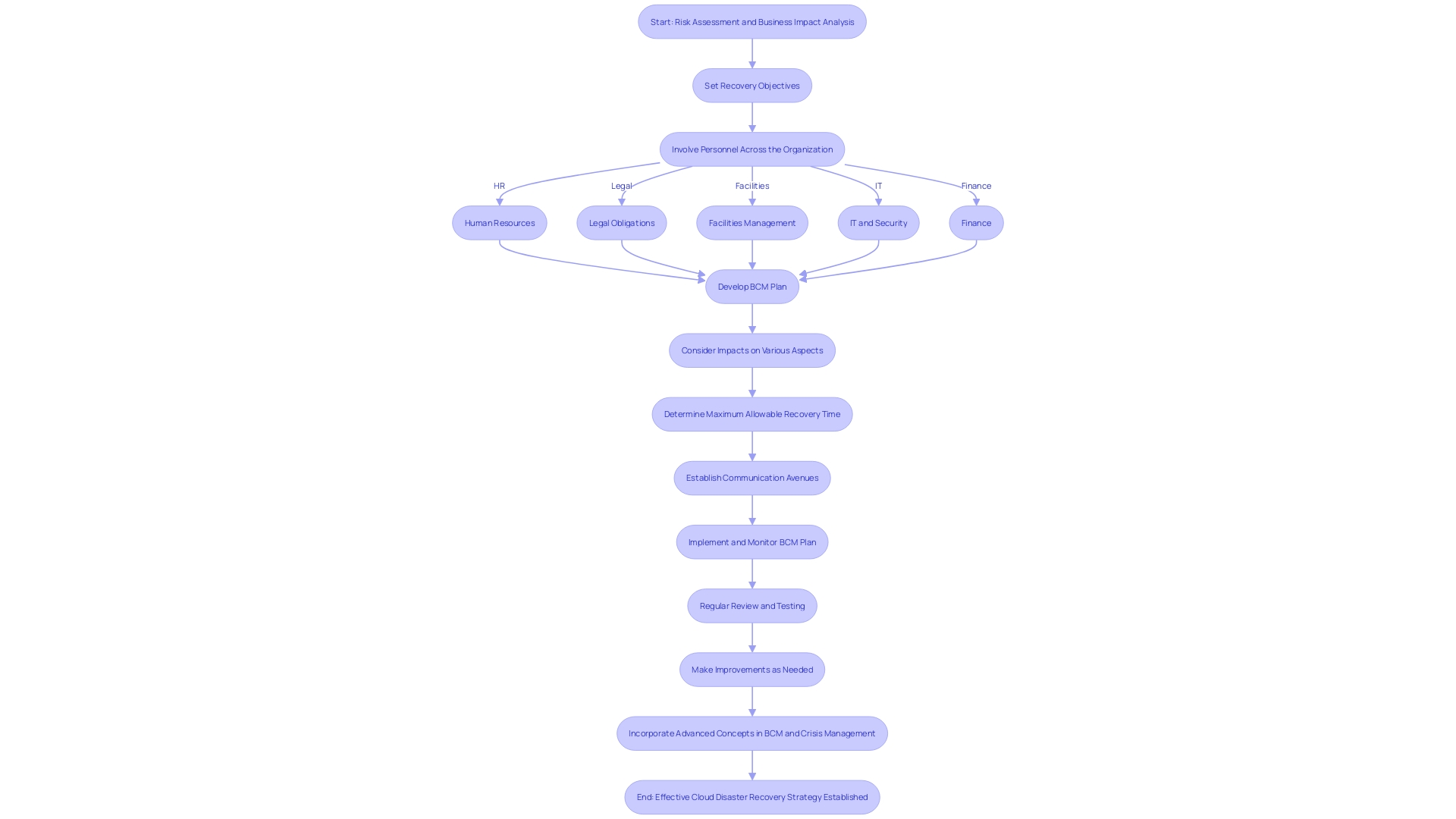
Establishing Clear Roles and Responsibilities in Disaster Recovery
A strong disaster recovery strategy is not only a technical necessity but a comprehensive imperative. The foundation of this strategy is a comprehensive risk assessment and impact analysis, customized to the distinct goals of the organization. This critical stage involves a cross-departmental effort, drawing on the expertise of professionals from human resources, legal, facilities, IT, security, and finance to construct a Business Continuity Management (BCM) plan that anticipates a spectrum of disruptive incidents.
The BCM plan meticulously evaluates potential impacts on various organizational facets—people, infrastructures, legal responsibilities, financial health, brand reputation, community relations, and environmental considerations. It sets forth a clear timeline for recovery, aligning with the maximum tolerable downtime for essential operations. Integral to the plan is a communication strategy that encompasses not only internal stakeholders but also the media and the wider public.
Post-planning, the focus shifts to diligent management oversight, which includes regular reviews and tests of the established protocols, ensuring that the plan remains responsive and up-to-date. This continuous process of evaluation and refinement highlights the organization's dedication to resilience and operational excellence, even in the face of natural disasters and other unforeseen challenges.
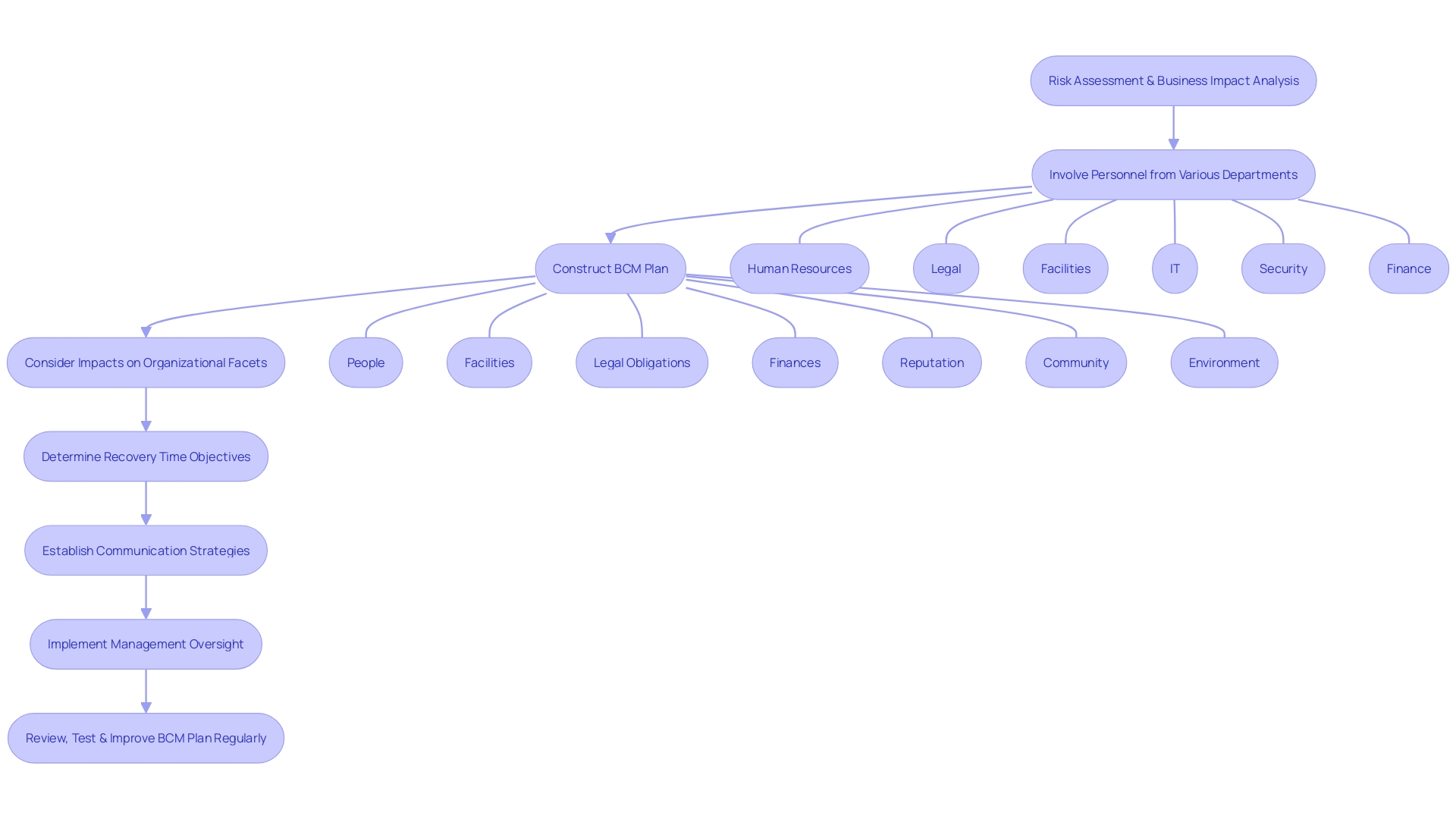
Best Practices for Cloud Backup and Recovery
Acquiring expertise in cloud safeguarding and restoration is vital to protect your organization's information from potential risks and guarantee uninterrupted operations. A crucial approach is to utilize dependable software for information protection, which serves as a vital safeguard against loss caused by hardware failures, cyber-attacks, or unintentional deletions. With statistics indicating that more than fifty percent of small businesses close within six months of a loss incident, the significance of strong recovery options is evident.
When selecting a backup system, it's crucial to consider the ability to create complete system images encompassing all files, settings, and boot sectors. This ensures a high level of security and storage reliability, as demonstrated by organizations with stringent long-term archival information storage requirements. The data must remain accessible even if your local infrastructure is completely lost, which is particularly relevant for global companies needing to distribute data geographically.
The implementation of solutions like Backblaze's Enterprise Control for Computer Backup caters to the requirement for simple, automatic, and centrally-managed data protection systems. It offers IT administrators greater control over endpoint backups, from user authentication to restoration capabilities, highlighting the evolution of backup technologies.
In the realm of higher education, the convenient availability of information for scientific researchers and student attraction efforts is paramount. Storage in the cloud, particularly hot storage, meets these needs by providing immediate access to information without the delays associated with cold storage or LTO tapes. Furthermore, the rise of cyber insurance, requiring off-site or immutable backups for liability coverage, underscores the necessity of a reliable backup strategy.
A comprehensive approach to safeguarding information in the cloud must also encompass a distinct understanding of your organization's objectives and requirements for storage. Considerations such as the speed of information access, confidentiality, server location, and scalability are vital. During critical situations, like disruptions in the data center caused by fire, flood, or electrical problems, relying on a carefully selected alternate storage option in the cloud serves as a safety net, guaranteeing the protection and dependability of your information for uninterrupted operational processes.
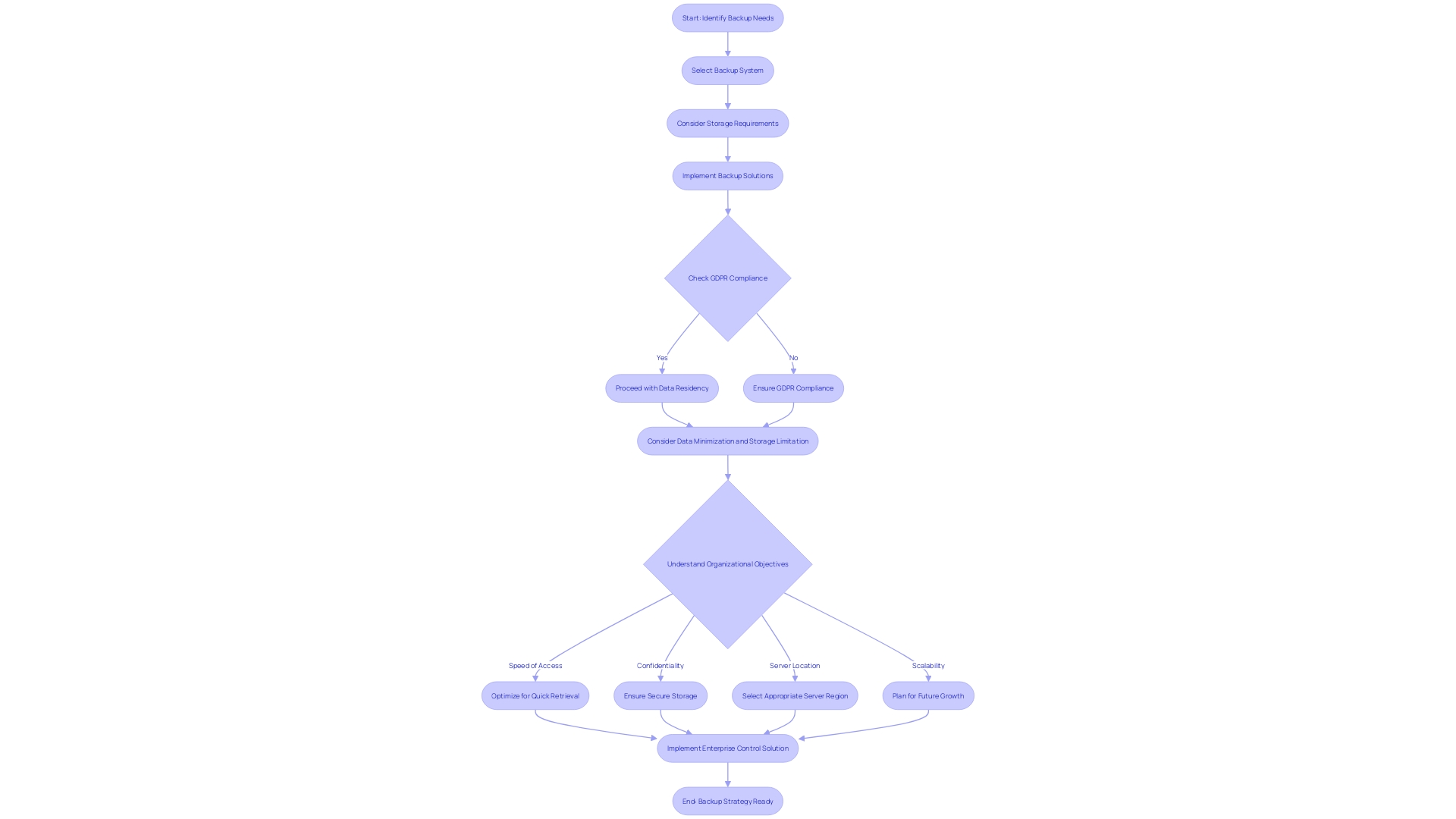
The Role of Managed Services in Cloud Backup and Disaster Recovery
The scenario of safeguarding and securing cloud data is continually evolving, with businesses seeking reliable solutions to protect their vital digital assets. Managed services have emerged as a pivotal element, offering an array of benefits for streamlining cloud data protection and disaster recovery operations. By utilizing the expertise of a managed services provider, organizations can take advantage of specialized knowledge and resources to strengthen their protection strategies.
Case studies have demonstrated the value of managed services in diverse contexts. Chess.com, a platform with over 150 million users, underscores the importance of robust IT infrastructure to support large-scale, real-time user engagement. By leveraging digital platforms, they have expanded their reach globally and emphasized the need for steadfast data security and backup solutions to maintain their operational integrity.
Similarly, the transition of a Ceeblue customer from self-managed servers to managed services illustrates the substantial advantages of such a move. This change led to a clear approval for managed services, demonstrating how companies can benefit from reduced operational complexity and improved performance.
The recent upheaval caused by unexpected service mark-ups from providers like Wowza highlights the significance of predictable costs and reliable partnerships in the managed services domain. As companies face significant cost increases across the video streaming sector, the importance of managed services in delivering cost-effective and scalable solutions has become more prominent.
Moreover, industry news highlights the growing emphasis on information as a critical business asset, with companies increasingly relying on data for operational efficiency and digital transformation. The recognition of data's value has led to the development of 5-Star Partner Programs among data storage and backup vendors, emphasizing their role in the success of solution providers.
Organizations considering managed services often inquire about the support they can expect during the transition. It's crucial to choose the appropriate migration partner to guarantee a seamless and prosperous shift. Guidance from industry experts can help navigate the intricacies of cloud migration, covering every stage from strategy formulation to the final implementation.
In essence, managed services are not just about offloading tasks; they're about engaging with seasoned professionals who can manage and maintain storage infrastructure, ensuring availability, and security. This approach allows businesses to focus on core operations while managed storage experts handle storage capacity planning, disaster recovery solutions, and continuous center monitoring.
To emphasize the universal requirement for dependable and protected information safeguarding, contemplate the guidance from TechRepublic Premium, which recommends organizations to create a consistent structure for file preservation, guaranteeing readiness for any emergency. This principle is echoed across the industry, where every organization relies on safeguarded, secure, and easily accessible information to thrive in today's digital economy.
Regular Testing and Maintenance of Cloud Backups
To ensure the reliability of cloud data protection, it's crucial to perform regular testing and maintenance. This procedure includes verifying the reliability of copies and guaranteeing that the information can be recovered precisely when necessary. The advancement of technology and the shift towards cloud-based solutions have mitigated issues like bit rot that plagued hardware-dependent backups. Nowadays, continuous scrutiny is set in place to detect and rectify any such corruption.
Moreover, with the rapid pace of software development, it's crucial to keep up with changes such as API updates or alterations in encoding that could affect the restore process. Regular testing ensures that any non-backwards compatible changes are identified and addressed, preventing potential restoration failures.
Furthermore, it is crucial to take into account the availability of your information. Cloud storage offers the advantage of easily accessible information without the delays associated with cold storage solutions. This ease of access is critical not only for day-to-day operations but also for maintaining the continuity of services in higher education and other sectors.
The significant financial consequences of information loss emphasize the necessity for strong contingency plans. Mismanagement of information can lead to significant operational and financial setbacks, eroding the trust of customers and stakeholders. As per Gartner's prediction, by 2025, 30% of organizations will have experienced an incident of information loss caused by human mistake, underscoring the significance of a dependable plan for storing and recovering data.
When creating a plan for safeguarding information, organizations need to consider elements like information dependability, retrieval speed, security, server location, and expandability. A carefully selected alternative option constitutes a vital element of an organization's stability and prosperity, serving as a protective measure against unexpected circumstances that might interrupt systems and centers storing information.
Therefore, it's crucial to assess your systems, determine where important information resides, and establish a routine that guarantees your backups are not only secure and up-to-date but also restorable. This proactive approach is a cornerstone of modern data protection and a testament to the value organizations place on their data assets.
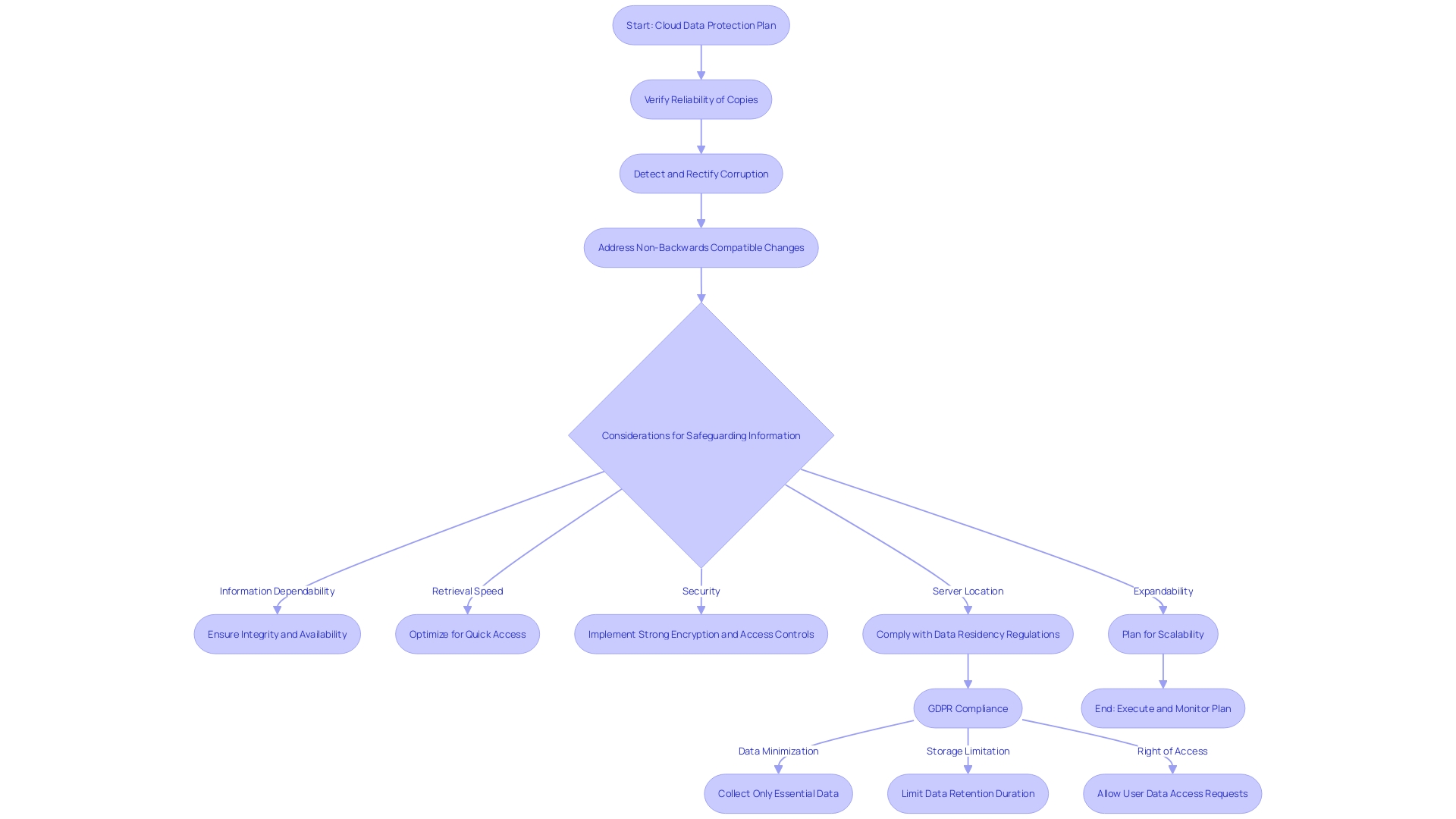
Conclusion
In conclusion, cloud backup and recovery are essential for safeguarding data assets and ensuring business continuity. The integration of cloud backup solutions mitigates risks and enables swift rebound from disruptions. Factors like long-term storage, immediate data access, and scalability should be considered when selecting the appropriate configuration.
The 3-2-1 backup principle remains relevant, emphasizing multiple copies of data across different media with one off-site backup.
Cloud backup offers key benefits, including data protection, security, and operational continuity. Encryption and access controls are crucial for privacy and establishing trust. Setting up a cloud backup system requires careful planning, considering data volume, reliability, and scalability.
The 3-2-1 backup principle and advancements like blockchain shape cloud data security.
Choosing the right cloud vendor involves evaluating expertise, support, and experience with migrations. Multi-cloud environments are important, and vendors should align with business requirements. Defining Recovery Time Objectives (RTOs) and Recovery Point Objectives (RPOs) guides evaluation and ensures swift recovery.
Conducting a risk assessment is essential for identifying threats and vulnerabilities. Encryption and privacy measures are crucial. Selecting the appropriate disaster recovery strategy involves understanding RTOs and RPOs, assessing risks, and incorporating best practices in business continuity.
Establishing clear roles and responsibilities involves cross-departmental effort and regular reviews of protocols. Implementing best practices includes using reliable software, considering system images, and regular testing and maintenance.
Managed services fortify data protection with specialized knowledge and resources. Organizations must prioritize data safety, reliability, and accessibility. Robust backup strategies safeguard data assets and maintain operational continuity.




